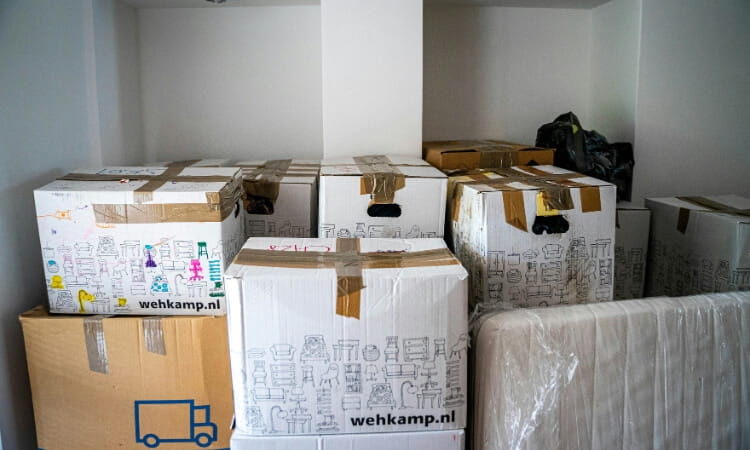Your landlord has just raised your rent by 10% and your mind starts running the numbers – should you cop it sweet or look to move?
It’s a familiar scenario in today’s unpredictable housing market.
Understanding the real costs of staying versus moving is essential for making informed choices: renters must consider hidden expenses such as moving costs, deposits and changing rental rates, giving them tools to handle rising rent pressures more effectively.
A grim time for many renters
National median market rents have hit record highs, reaching $627 per week, with an average annual growth rate of 9.1% during the past three years, according to real estate giant CoreLogic.
CoreLogic also reported annual rental changes (houses and units) in regional Australia are not far off from the big cities: annual rent changes were 9.4% for combined capital cities, 6.4% for combined regional areas, and 8.5% nationally.
So, is it better to stay or move if your rent is raised by 10%? Let’s examine the costs and benefits of each option.
A breakdown of typical moving costs
We’ll start with the most obvious expense: moving costs.
Professional moving services aren’t cheap. For example, moving a three-bedroom house in the Gold Coast costs $1,095.25 on average, with an hourly rate of $158.26.
In a bigger city like Melbourne, the cost is slightly higher at about $1,118.46.
The moving costs between states or cities will be more expensive if you move further away.
You could choose to handle packing yourself and hire some help with a truck – a common option with businesses such as “Two Men and a Truck”, which typically costs around $100 per hour.
Be aware, though, that the hourly rate often starts from the moment the truck leaves the company’s warehouse until it returns. Alternatively, you can rent a van for a lower price, such as $87 for a 24-hour Handivan rental at Bunnings.
Don’t forget the cost of moving boxes, too: Bunnings’ 52 litre moving cartons cost $2.66 each.
End-of-lease or bond cleaning is another common expense.
For a typical three-bedroom property, internal cleaning can range from $365 to $500.
If you have pets, or kids who love drawing on the walls, your cleaning costs might be a bit higher.
Now, let’s look at utility connection expenses that can catch people by surprise.
Cancelling your internet service can be costly if you don’t meet the exit or cancellation policies. With Telstra Home Internet, for example, if you cancel within the first 24 months, you must return your modem within 21 days to avoid a $400 non-return fee.
Most providers charge a cancellation fee or require final device repayments, typically ranging from $100 to $500, depending on the remaining contract period. As a renter, it might be wise to choose a no-lock-in contract plan to avoid these fees if you need flexibility.
Electricity and gas connection and disconnection fees are usually minor but can add up, often costing about $40 to $60 for connection and disconnection fees for electricity alone. If your house uses gas for hot water or cooking, you may have to pay additional fees for setting up service.
However, there are also non-financial costs, like the time spent searching for a new home, attending inspections, and putting in applications.
Moving takes effort and energy for packing, transporting and unpacking.
Some people feel emotionally attached to their current home, which can make leaving harder.
Older renters seem to draw strength from their familiarity with, attachment to, and enjoyment of their place and community. This is something to be considered.
Plus, moving can take an emotional toll.
The benefits of not moving
The clear benefit of staying is avoiding the hassle of relocating.
Staying means saving on moving expenses and avoiding the time spent searching for a new place, packing and unpacking.
This may also save some people from needing to take time off work.
Changing and updating an address is also another tedious task that can be avoided by staying.
Moving can hit the hip pocket with “after moving costs” that people may not initially consider.
For instance, a new location might mean a longer commute. If each trip adds just 15 extra minutes, that could amount to an additional 11 hours per month over 22 workdays.
For drivers, increased fuel and parking expenses might also come into play.
Is the current or new location closer to a supermarket, hospital, and school? This proximity could be beneficial or detrimental, depending on the surrounding environment and available services.
To move or not to move?
One point to note is that overall, moving costs are likely to be similar between big cities and regional areas if you get moving supplies or rent a van from a large company such as Bunnings.
In the end, moving costs will be around $2,000 based on the figures above, and it can be around $800 to $1,000 cheaper if you opt to rent a van instead of using a full-service moving company.
Therefore, if the current rent is $600 per week and is about to increase by 10% to $660, the additional cost would be $3,120 per year.
So is it cheaper to move or stay when your rent increases by 10%?
The answer is moving may save about $1,000 to $2,000, but comes with the hassle and emotional toll of relocation. Staying will be more expensive, but with less hassle and emotional strain.
The right choice depends on your situation.
The article has been republished from The Conversation under the Creative Commons license. Read the original article.




